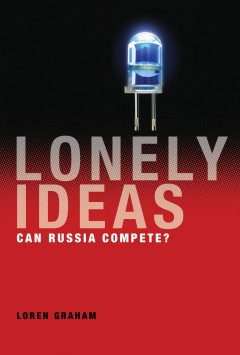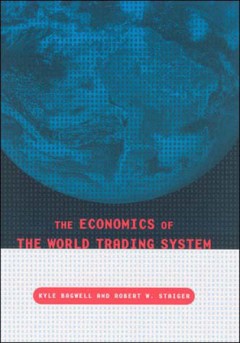Filter by

Finite State Machines in Hardware: Theory and Design (with VHDL and SystemVer…
Modern, complex digital systems invariably include hardware-implemented finite state machines. The correct design of such parts is crucial for attaining proper system performance. This book offers detailed, comprehensive coverage of the theory and design for any category of hardware-implemented finite state machines. It describes crucial design problems that lead to incorrect or far from optima…
- Edition
- -
- ISBN/ISSN
- 9780262319096
- Collation
- 1 online resource (x, 337 pages) :illustrations
- Series Title
- -
- Call Number
- -

Assembling Policy: Transantiago, Human Devices, and the Dream of a World-Clas…
An examination of how human beings are brought into the planning of complex infrastructure projects, through analysis of a controversial public transportation project.OCLC-licensed vendor bibliographic record.
- Edition
- -
- ISBN/ISSN
- 9780262330954
- Collation
- 1 online resource.
- Series Title
- -
- Call Number
- -

Lonely Ideas: Can Russia Compete?
When have you gone into an electronics store, picked up a desirable gadget, and found that it was labeled "Made in Russia"? Probably never. Russia, despite its epic intellectual achievements in music, literature, art, and pure science, is a negligible presence in world technology. Despite its current leaders' ambitions to create a knowledge economy, Russia is economically dependent on gas and o…
- Edition
- -
- ISBN/ISSN
- 9781461942979
- Collation
- 1 online resource (xi, 204 pages)
- Series Title
- -
- Call Number
- -

The economics of consumer credit
Academic research and policy discussions of credit markets usually focus on borrowing by firms and producers rather than by households, which are typically analyzed in terms of their savings and portfolio choices. The Economics of Consumer Credit brings together leading international researchers to focus specifically on consumer debt, presenting current empirical and theoretical research crucia…
- Edition
- -
- ISBN/ISSN
- 9780262268370
- Collation
- 1 online resource (vi, 378 pages) :illustrations, maps
- Series Title
- -
- Call Number
- -

The trifler, or, Pretty plaything
- Edition
- -
- ISBN/ISSN
- -
- Collation
- Printed wrappers; woodcut vignette on upper wrapper; wrappers detached,UCLA copy misbound; caption t
- Series Title
- -
- Call Number
- -
- Edition
- -
- ISBN/ISSN
- -
- Collation
- Printed wrappers; woodcut vignette on upper wrapper; wrappers detached,UCLA copy misbound; caption t
- Series Title
- -
- Call Number
- -

The economics of the world trading system
World trade is governed by the rules of the World Trade Organization (WTO), the successor to the General Agreement on Tariffs and Trade (GATT). The WTO sets rules of conduct for the international trade of goods and services and for intellectual property rights, provides a forum for multinational negotiations to resolve trade problems, and has a formal mechanism for dispute settlement. It is the…
- Edition
- -
- ISBN/ISSN
- 9780262267540
- Collation
- 1 online resource (xiii, 224 pages) :illustrations
- Series Title
- -
- Call Number
- -

Organic struggle :the movement for sustainable agriculture in the United States
'Organic Struggle' analyzes the evolution of the sustainable agriculture movement in the United States and evaluates its achievements and shortcomings. It traces the development of organic farming from its roots in the 1940s through its embrace by the 1960s counterculture to its mainstream acceptance and development into a multi-billion dollar industry.OCLC-licensed vendor bibliographic record.
- Edition
- -
- ISBN/ISSN
- 9780262328302
- Collation
- 1 online resource (327 pages).
- Series Title
- -
- Call Number
- -

The standard popular reciter including selections from the works of Rudyard K…
- Edition
- -
- ISBN/ISSN
- -
- Collation
- 256 p
- Series Title
- -
- Call Number
- 800 STA
- Edition
- -
- ISBN/ISSN
- -
- Collation
- 256 p
- Series Title
- -
- Call Number
- 800 STA

Nantucket house
- Edition
- -
- ISBN/ISSN
- -
- Collation
- 42 p. :
- Series Title
- -
- Call Number
- 800 WEL n
- Edition
- -
- ISBN/ISSN
- -
- Collation
- 42 p. :
- Series Title
- -
- Call Number
- 800 WEL n

Syrlin or position
- Edition
- -
- ISBN/ISSN
- -
- Collation
- 499 p,
- Series Title
- -
- Call Number
- 800 OUI s
- Edition
- -
- ISBN/ISSN
- -
- Collation
- 499 p,
- Series Title
- -
- Call Number
- 800 OUI s
 Computer Science, Information & General Works
Computer Science, Information & General Works  Philosophy & Psychology
Philosophy & Psychology  Religion
Religion  Social Sciences
Social Sciences  Language
Language  Pure Science
Pure Science  Applied Sciences
Applied Sciences  Art & Recreation
Art & Recreation  Literature
Literature  History & Geography
History & Geography